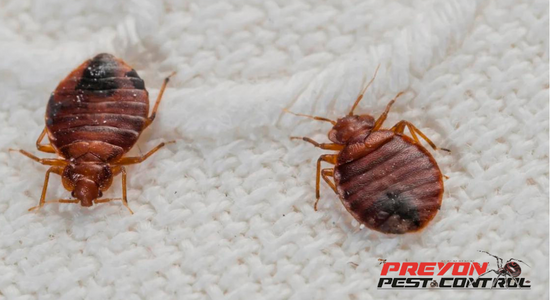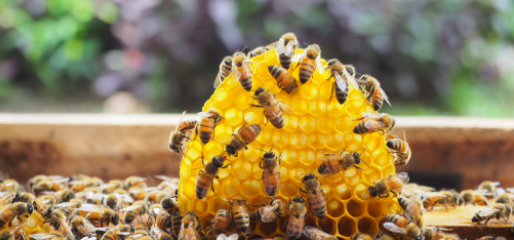The bed bug lifecycle starts with tiny eggs, laid by females in hidden spots. These eggs hatch into nymphs, which go through five growth stages, needing blood meals at each stage. Once they mature into adults, they can reproduce rapidly, laying up to five eggs daily. Their feeding habits revolve around humans, attracted by body heat and carbon dioxide. To effectively manage infestations, it’s essential to understand this lifecycle, and there’s more to discover about bed bug control and extermination.
Understanding Bed Bugs: An Overview
When you think about pests that invade your home, bed bugs mightn’t be the first to come to mind, yet they can be a persistent nuisance. Understanding bed bug behavior is vital for effective management.
These tiny insects often hide in cracks and crevices, making identification techniques essential. Look for dark spots on bedding or furniture, which indicate their presence. Inspect seams and tags of mattresses, as well as baseboards and carpets.
Knowing their habits helps you recognize when they’ve invaded. By staying vigilant, you can take action early, preventing an infestation from becoming a more significant problem.
The Egg Stage: Starting the Bed Bug Life Cycle
Although often overlooked, the egg stage is essential in the bed bug life cycle. Each female bed bug can lay up to five eggs daily, ensuring rapid population growth.
The eggs are tiny, about the size of a pinhead, and are usually placed in hidden crevices. During the incubation period, which lasts around 6 to 10 days, the eggs develop in warm, humid environments.
Once they hatch, you’ll witness the start of a new generation of bed bugs. Understanding this stage helps you realize how quickly infestations can escalate if not addressed promptly.
Stay vigilant to prevent them from multiplying!
Nymphs: Growing Up in Stages
After the eggs hatch, bed bugs enter the nymph stage, which consists of a series of molts as they grow.
During nymph development, these tiny insects pass through five distinct growth stages before becoming adults. Each stage requires a blood meal for proper growth, so you’ll often find them hiding in your bedding or furniture, waiting to feed.
As they molt, they shed their exoskeletons, revealing larger, more developed bodies. This process can take several weeks, depending on temperature and food availability.
Understanding these growth stages helps you recognize and address a bed bug infestation more effectively.

Adult Bed Bugs: The Reproductive Phase
As nymphs mature into adults, they enter a critical reproductive phase that greatly impacts the spread of bed bug infestations.
Adult bed bugs exhibit unique mating behaviors, often engaging in traumatic insemination, where males pierce the female’s abdomen to deposit sperm. This unconventional approach enhances their chances of successful reproduction.
With ideal conditions, female bed bugs can lay up to five eggs daily, leading to astonishing reproduction rates. In just a few weeks, a small infestation can grow exponentially, making it essential to address the problem quickly.
Understanding this phase helps you combat bed bugs effectively and prevent further spread.
Feeding Habits: How Bed Bugs Survive
Understanding how bed bugs feed is essential for managing infestations effectively.
These pests have a feeding frequency of about once every five to ten days, depending on factors like temperature and availability of hosts. They’re attracted to humans primarily by body heat and carbon dioxide, making you a prime target while you sleep.
During feeding, bed bugs pierce your skin and inject saliva, which prevents blood from clotting. This process can leave you with itchy welts.
Environmental Factors: Influencing the Lifecycle
Bed bugs not only rely on feeding for survival but also depend heavily on their environment to thrive and reproduce.
Temperature fluctuations can accelerate or slow down their lifecycle, while humidity levels play a vital role in their survival. Ideal humidity keeps them hydrated, aiding in reproduction.
Light exposure affects their activity patterns; they prefer dark environments, which can influence where they nest.
Additionally, the availability of hosts directly impacts their feeding frequency and overall health.
The right nesting materials, like fabric or wood, provide shelter, facilitating their development and increasing the chances of infestation in your home.
Prevention and Control: Breaking the Cycle
While preventing bed bugs may seem challenging, taking proactive measures can effectively break their lifecycle and keep your home pest-free.
Start by regularly inspecting your sleeping areas, especially after traveling. Reduce clutter to eliminate hiding spots, and use protective covers on mattresses and pillows.
Implement control strategies like vacuuming frequently and using heat treatments for infested items. If you suspect an infestation, act quickly by contacting a professional bed bug inspection and pest control services in Glenwood and greater Chicagoland region.
Frequently Asked Questions
How Long Can Bed Bugs Survive Without Feeding?
Bed bugs can survive several months without feeding, showcasing their remarkable bed bug survival skills. Their feeding habits allow them to endure long periods without food, making them resilient pests in various environments.
Do Bed Bugs Prefer Certain Types of Hosts?
Yes, bed bugs have host preferences that influence their feeding habits. They tend to favor humans over other animals due to warmth and carbon dioxide emissions, making you their ideal target for a meal.
Can Bed Bugs Transmit Diseases to Humans?
You might worry about bed bugs and their impact on human health, but they don’t transmit diseases like other pests. While their bites can cause irritation, bed bug diseases aren’t a significant concern for people.
How Do Bed Bugs Detect Their Hosts?
Bed bugs detect their hosts using chemical cues and thermal sensing. They’re attracted to the carbon dioxide you exhale, which signals your presence, making it easier for them to find you when you’re nearby.
Are There Natural Predators of Bed Bugs?
Yes, there are bed bug predators that can help with natural control. Some examples include certain spiders, centipedes, and predatory beetles. These creatures can reduce bed bug populations, although they may not eliminate them entirely.
Reach Out to Us For Professional Bed Bug Inspection Service in Chicagoland, Illinois.
Getting rid of bed bugs permanently requires a comprehensive approach that combines diligent preparation, professional treatment, and ongoing prevention. If you’re facing a bed bug infestation in Chicago and its suburbs, trust the experts at Preyon Pest Control. Don’t let bed bugs disrupt your life; contact us today for a thorough inspection and take the first step toward a peaceful, bed bug-free home.
Contact us today at <a href=”tel:7082327703”> (708) 232 7703</a> to schedule your bed bug inspection and general pest control in Country Club Hills, Illinois, and let’s work together to keep your home safe and comfortable.




